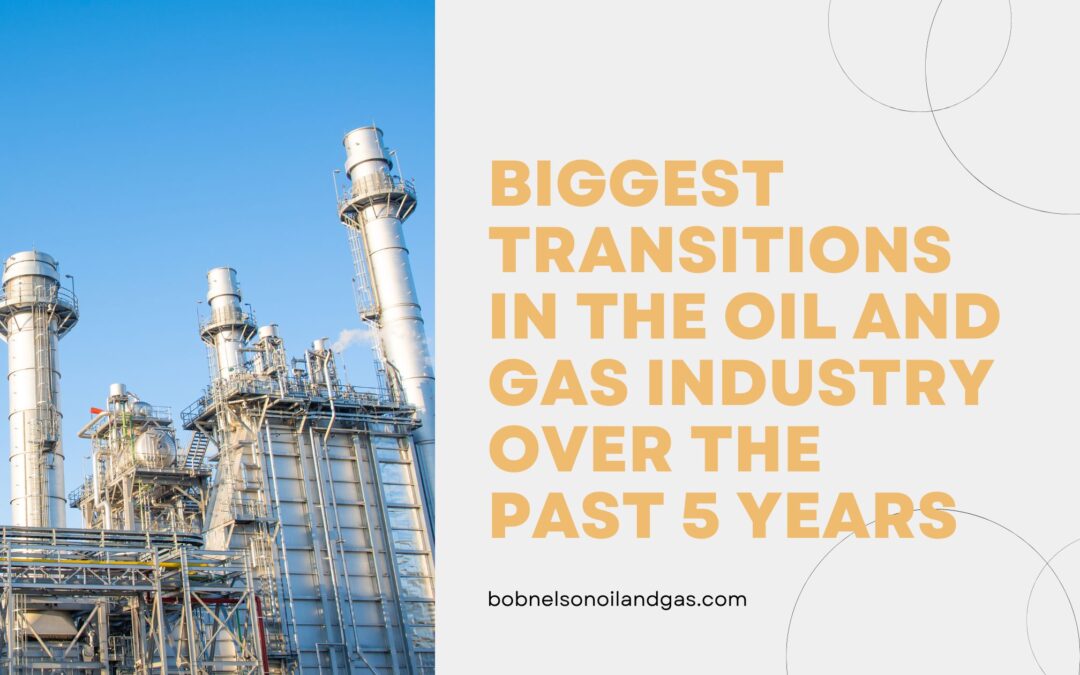The oil and gas industry, one of the most critical sectors in the global economy, has undergone significant transitions over the past five years. Driven by technological advancements, evolving energy policies, and shifting public sentiment, these changes have redefined how companies operate. Here’s a look at some of the most impactful transitions in this industry.
- Increased Focus on Sustainability
One of the most notable shifts has been the industry’s increased focus on sustainability and environmental impact. Over the past few years, the pressure to address climate change has intensified, pushing oil and gas companies to adopt more environmentally responsible practices. This includes a greater emphasis on reducing carbon emissions, adopting cleaner technologies, and investing in renewable energy projects. BP and Shell have set ambitious targets to reach net-zero emissions by 2050, signaling a significant departure from their traditional oil-centric models.
- Digital Transformation and Data Analytics
The rise of digital technologies has profoundly impacted oil and gas operations. From adopting artificial intelligence (AI) to implementing machine learning algorithms and data analytics, companies are now leveraging technology to improve efficiency and decision-making. For instance, predictive maintenance, driven by data analytics, helps prevent equipment failures, reducing downtime and operational costs. Digital twins—virtual models of physical assets—are also becoming more common, enabling companies to simulate and optimize production processes.
- Shift Toward Natural Gas
Natural gas has emerged as a critical player in the energy transition, mainly due to its lower carbon footprint than oil and coal. Over the past five years, there’s been a noticeable shift in investments toward natural gas infrastructure, with liquefied natural gas (LNG) becoming an essential component of global energy strategies. Countries like Qatar and the United States have increased their LNG export capacities, while Europe has expanded its LNG imports to reduce dependence on Russian gas.
- Electrification and Decarbonization
Another significant transition is the increased electrification of operations. Oil and gas companies are turning to electric solutions for drilling and production processes to minimize emissions. Additionally, the industry is exploring carbon capture, utilization, and storage (CCUS) technologies, which capture carbon dioxide emissions from industrial activities and store them underground. Decarbonizing the energy sector has become a primary focus, and CCUS is considered a crucial tool.
- Global Supply Chain Disruptions
The COVID-19 pandemic brought about significant disruptions in the global oil and gas supply chain. Oil demand plummeted in 2020 as lockdowns and travel restrictions took hold, causing companies to reassess their supply chain strategies. The past few years have focused on improving supply chain resilience, diversifying suppliers, and adopting digital tools for supply chain management to mitigate future disruptions.
- Shifting Geopolitical Dynamics
Geopolitical shifts have also played a role in transforming the industry. The Russian invasion of Ukraine in 2022, for instance, has led to global sanctions and a reorganization of energy supply chains. European countries have sought alternatives to Russian oil and gas, accelerating the push toward renewables and natural gas imports from other regions.
Conclusion
The oil and gas industry has experienced significant transitions over the past five years, driven by environmental, technological, and geopolitical factors. Companies that adapt to these changes by embracing sustainability, investing in digital technologies, and rethinking their supply chain strategies will be better positioned to thrive in an increasingly uncertain future. The path forward requires balancing traditional energy demands with the urgent need for a cleaner, more sustainable energy landscape.

